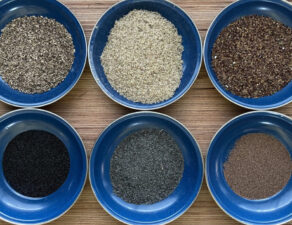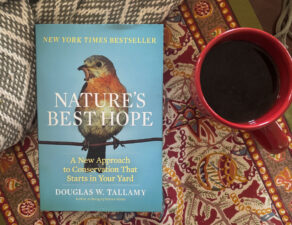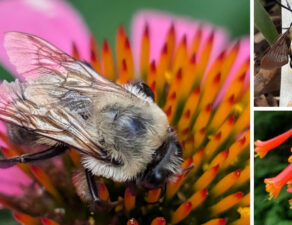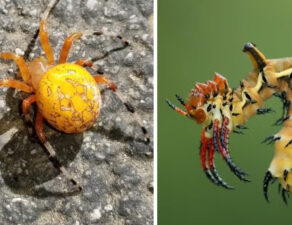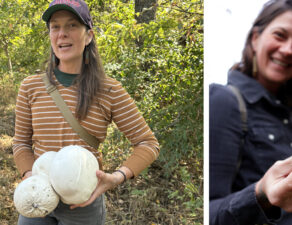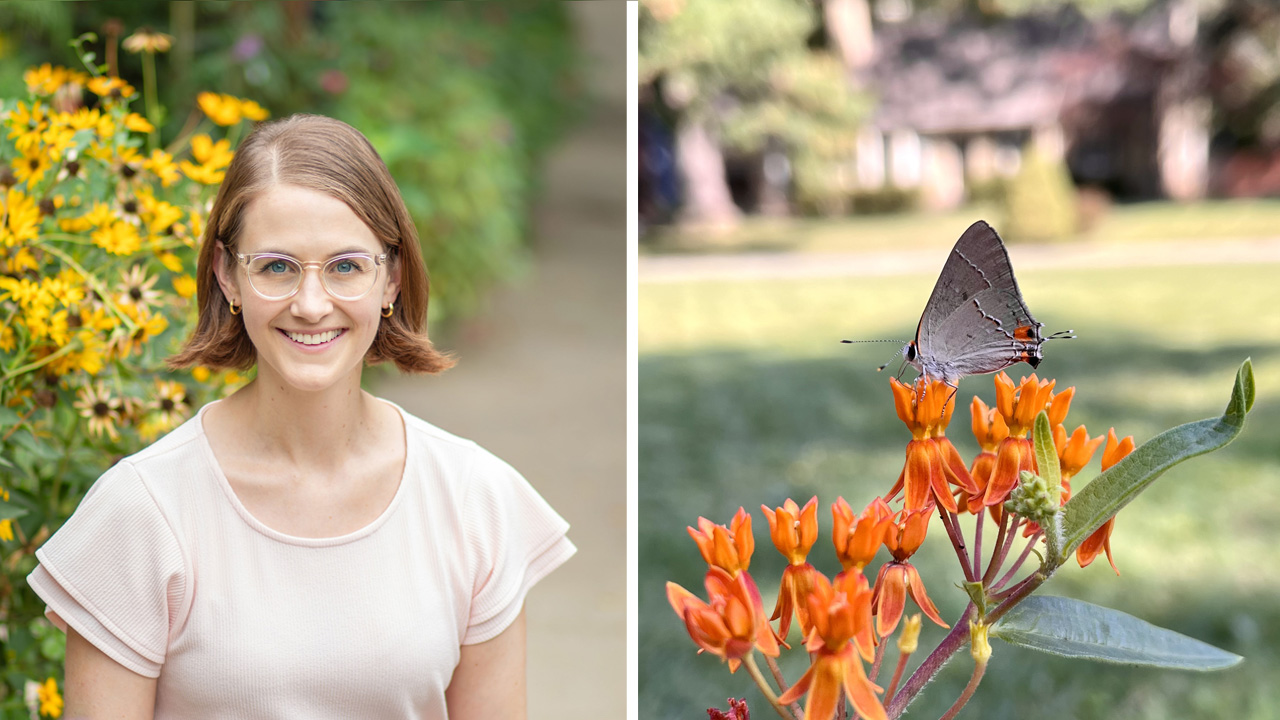
Photos: Left: Peach Sky Photography, Right: Ginny Varraveto
By: Ginny Varraveto, Deep Roots Volunteer
Walk around most neighborhoods in the Kansas City metro and you will see the same plants repeated in the landscape: boxwoods, evergreen shrubs, maybe some hydrangeas or daylilies and a lot of turf grass. I used to think if the landscape is green, then nature is happy. And if a plant has flowers, the bees will like it.
But when I started my own garden, I learned that many plants favored by traditional gardeners and landscapers are not well suited to support local wildlife or ecosystems. Not only that, but some cause more harm than benefit. The solution? Remove invasive species, reduce the lawn, and garden with native plants.
I converted a section of my yard to a native garden, and it has become a show of color and life. Bees love the fuzzy yellow flowers on Shrubby St. John’s Wort (Hypericum prolificum). Goldfinches visit Purple Coneflower (Echinacea purpurea) and monarch butterfly caterpillars chomp on Butterfly Milkweed (Asclepias tuberosa). I have glimpsed a clear-winged hummingbird moth sipping from Rose Verbena (Glandularia canadensis) and recently noticed several kinds of grasshoppers and dragonflies that were previously absent. This small patch of native plants is helping to attract and support a mini ecosystem.
Now when I see a sterile lawn, I imagine the vibrant and beneficial plants that could grow there instead. Luckily, I am not alone. The Nature Advisors program by Deep Roots offers habitat consultation services to gardeners and residential landowners. Trained volunteers conduct site visits and prepare tailored reports recommending plants and best practices to make each site more resilient and welcoming to wildlife.
I became a volunteer Nature Advisor last year and have had the opportunity to learn from and collaborate with master gardeners, master naturalists, landscape design small business owners, public land managers, professional conservationists, and community activists. Amongst this humble and curious group, led by program manager Chris Cardwell, I am constantly learning new plants, approaches, and perspectives.
One of the most important tenants of a successful native garden is to find the right plant for the right place. For example, Prairie Blazing Star (Liatris pycnostachya) may grow lanky and flop over in a shady garden bed but will grow upright when planted in full sun with competition from native grasses and other prairie plants.
Nature Advisor and master gardener, Mae Christenson, calls selecting the right plants for the site the “secret sauce” for success. Identify whether site conditions (soil, light, and moisture) most resemble a glade, prairie, savanna, or woodland and then select plants that naturally occur in that habitat.
There is no one-size-fits-all plant that will work well in everyone’s yard. Nature Advisors meet the client where they are and work with them on their specific goals. Some are just learning to incorporate native plants, while others are native plant nursery junkies looking to expand or improve their garden habitats. One client I visited wanted to add color and attract bees and butterflies while another was interested in incorporating a rain garden to manage storm water runoff. With each site visit, Nature Advisors make new connections and expand a growing network of individuals and neighbors who are collaborating to make a difference. I could not be more excited to be a part of this movement.
Learn more about Nature Advisors and how to request a consultation or become a volunteer here: https://deeproots.org/nature-advisors/
